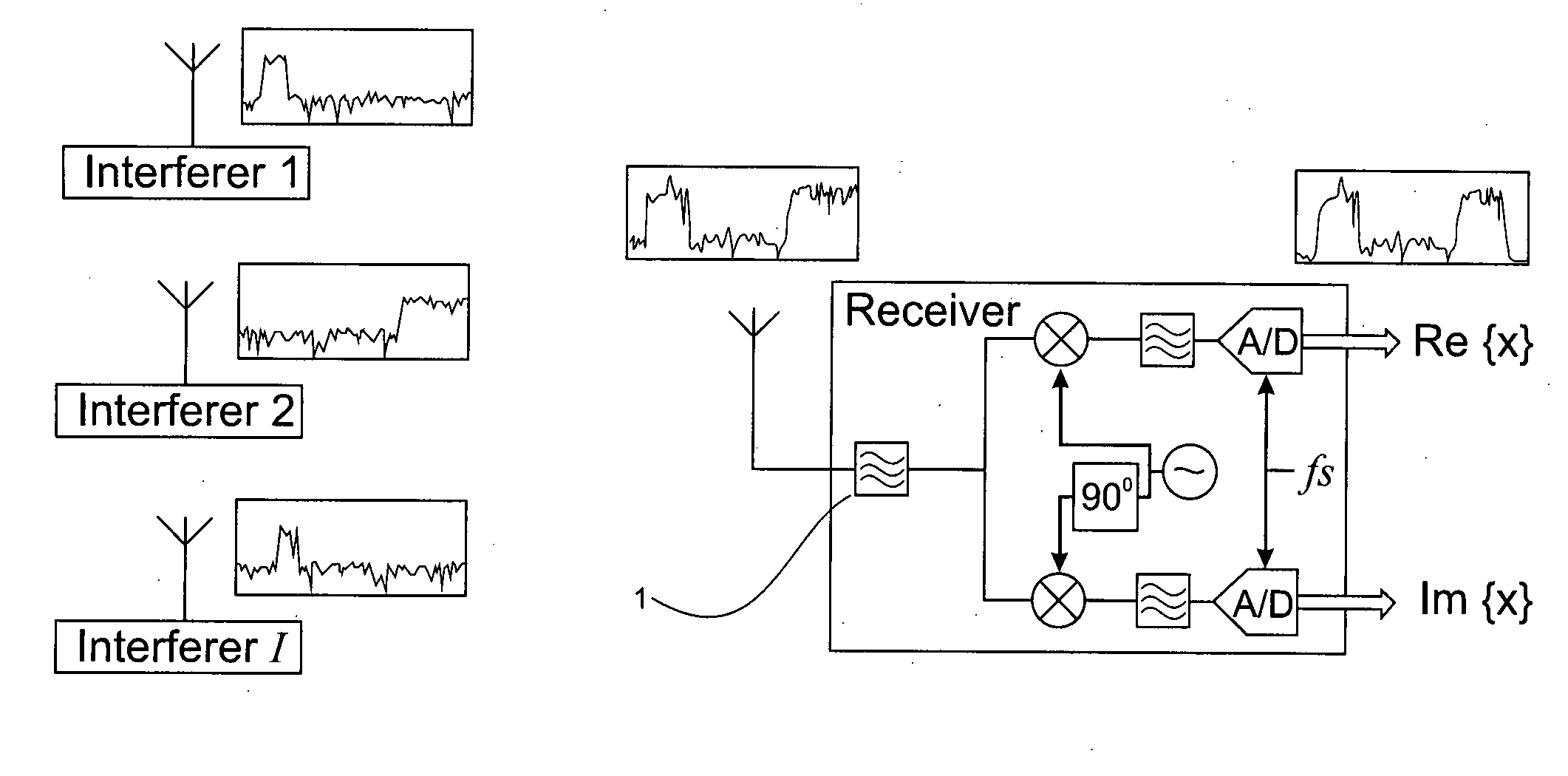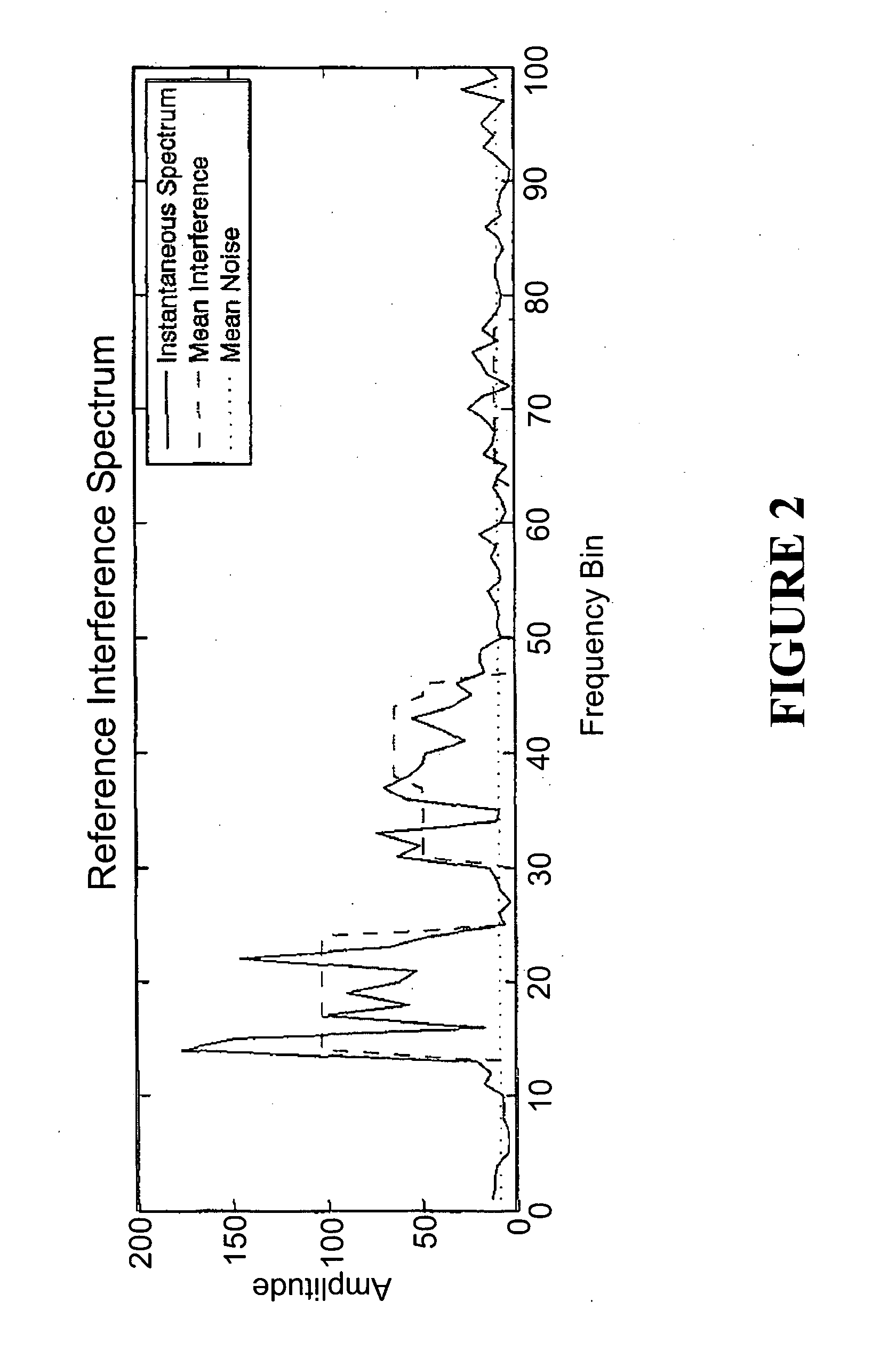Detection of Wideband Interference
a wideband interference and detection technology, applied in the field of noise power estimation and detection of interference, can solve the problems of inefficient use of licensed spectrum and increasing interference between wideband systems
- Summary
- Abstract
- Description
- Claims
- Application Information
AI Technical Summary
Benefits of technology
Problems solved by technology
Method used
Image
Examples
Embodiment Construction
[0024]FIG. 1 shows a conventional receiver structure. The received signal is bandlimited to the approximate desired signal bandwidth B by band pass filter 1. The bandlimited signal is down-converted to baseband and complex samples are obtained at a rate fs≧B sufficient to prevent aliasing of the desired signal. Initial detection of interferers takes place during a time-limited signal-free period such as an N sample inter-frame space. Thus, the receiver obtains a column vector of N signal samples
x=∑i=1Ihisi+z1
where si is the N length vector representing the ith interferer experiencing N×N circulant fading channel matrix hi and z is additive white Gaussian noise (AWGN) having variance σZ2 per sample. Application of the N×N discrete Fourier transform (DFT) matrix D to x produces
X=Dx=∑i=1IHiSi+Z2
where Hi is the diagonal N×N channel transfer function matrix for the ith interferer, Si is the N length DFT of si and Z is the DFT of AWGN vector z having both real part ZRRe{Z} and imaginary p...
PUM
 Login to View More
Login to View More Abstract
Description
Claims
Application Information
 Login to View More
Login to View More - R&D
- Intellectual Property
- Life Sciences
- Materials
- Tech Scout
- Unparalleled Data Quality
- Higher Quality Content
- 60% Fewer Hallucinations
Browse by: Latest US Patents, China's latest patents, Technical Efficacy Thesaurus, Application Domain, Technology Topic, Popular Technical Reports.
© 2025 PatSnap. All rights reserved.Legal|Privacy policy|Modern Slavery Act Transparency Statement|Sitemap|About US| Contact US: help@patsnap.com



